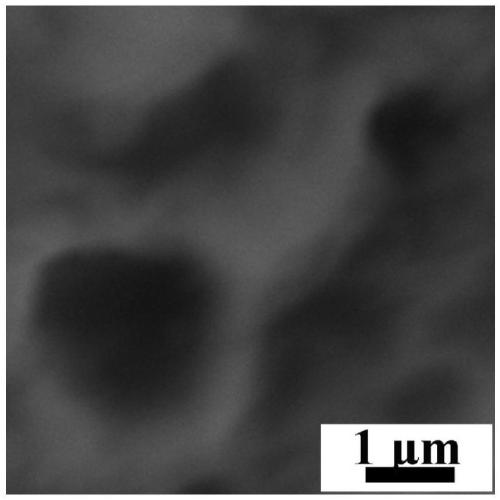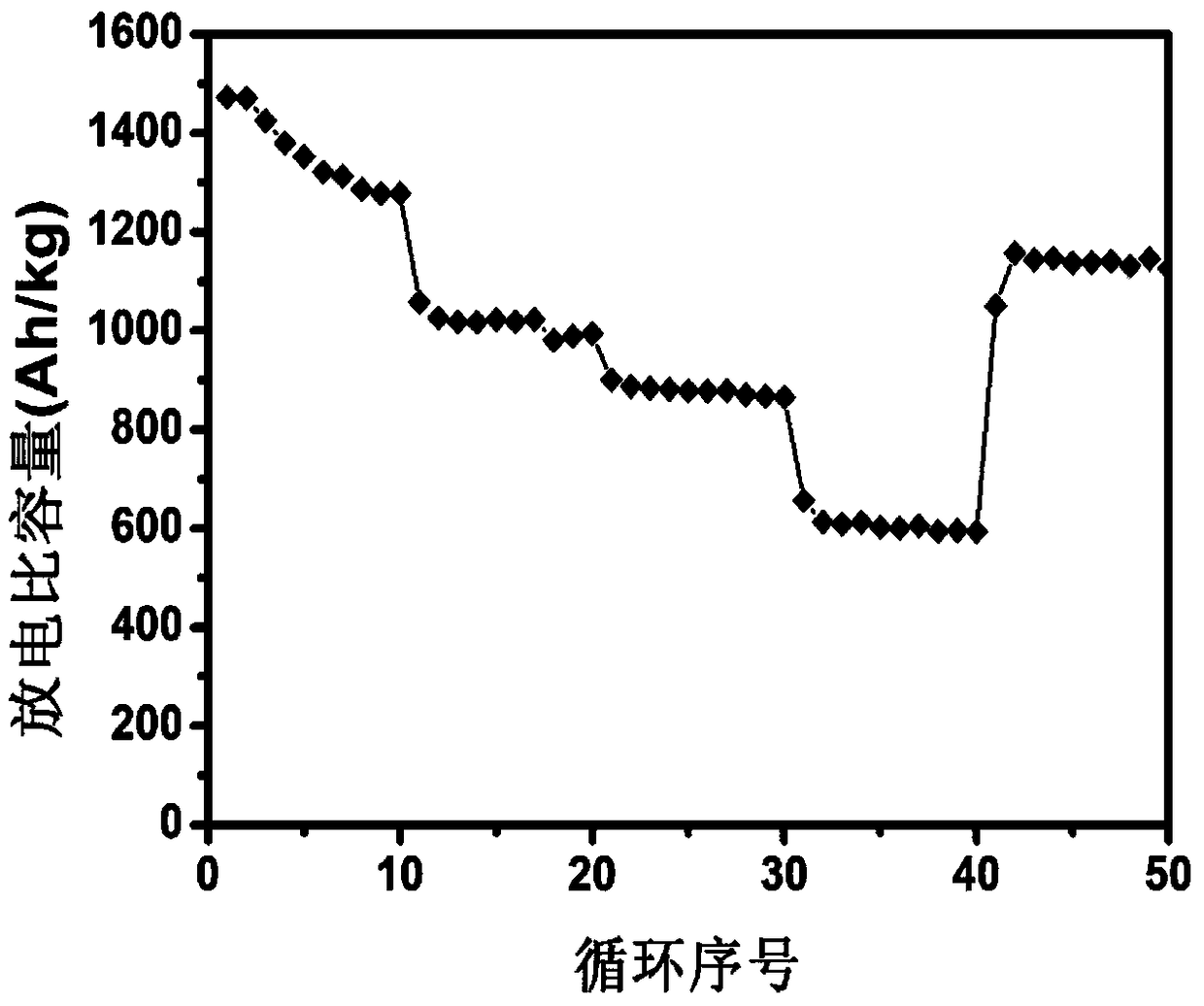A lithium sulfide battery functional separator coating material and a preparation method thereof
A coating material, a technology for lithium-sulfur batteries, applied in the field of material chemistry, can solve problems such as the inability to suppress the shuttle effect of polysulfides, and achieve the effects of improving capacity retention, improving surface adsorption, and reducing solubility
- Summary
- Abstract
- Description
- Claims
- Application Information
AI Technical Summary
Problems solved by technology
Method used
Image
Examples
Embodiment 1
[0023] Step (1): Sonicate industrially produced 2 mg / ml graphene oxide (GO) in a cell pulverizer for 1 hour, then centrifuge at 6000 r / min for 0.5 hour, and take the upper graphene oxide dispersion.
[0024] Step (2): Cut the nickel foam into small pieces with a section 888 of 2*2cm, immerse in the graphene oxide obtained in step (1), and ultrasonicate for 30 minutes.
[0025] Step (3): Take the massive product 1 obtained in step (2) and transfer it to a 10mg / ml sodium ascorbate solution, let it stand for 12 hours, then keep it in a constant temperature oven at 60°C for 2 hours, and after cooling to room temperature, Rinse with deionized water.
[0026] Step (4): Immerse the bulk product 2 obtained in step (3) in PDMS for 15 minutes, take it out and vacuum it for 2 hours, then use paper to absorb excess PDMS on the surface and place it on a dust-free paper. Flip every 30 minutes.
[0027] Step (5): Dry the massive product 3 obtained in step (4) in a constant temperature dryi...
Embodiment 2
[0032] Step (1): Sonicate industrially produced 2 mg / ml graphene oxide (GO) in a cell pulverizer for 1 hour, then centrifuge at 6000 r / min for 0.5 hour, and take the upper graphene oxide dispersion.
[0033] Step (2): Cut the nickel foam into small pieces with a cross-section of 2*2cm, immerse in the graphene oxide obtained in step (1), and ultrasonicate for 30 minutes.
[0034] Step (3): Take the massive product 1 obtained in step (2) and transfer it to 8mg / ml sodium ascorbate solution, let it stand for 12 hours, then keep it in a constant temperature oven at 60°C for 2 hours, and after cooling to room temperature, Rinse with deionized water.
[0035] Step (4): Immerse the bulk product 2 obtained in step (3) in PDMS for 10 minutes, take it out and vacuum it for 2 hours, then use paper to absorb excess PDMS on the surface and place it on a dust-free paper. Flip every 30 minutes.
[0036]Step (5): Dry the massive product 3 obtained in step (4) in a constant temperature drying...
Embodiment 3
[0039] Step (1): Industrially produced 2 mg / ml graphene oxide (GO) was sonicated in a cell pulverizer for 1 hour, and then centrifuged at 6000r / min for 0.5 hour to obtain the upper graphene oxide dispersion.
[0040] Step (2): Cut the nickel foam into small pieces with a cross section of 2*2cm, immerse in the graphene oxide obtained in step (1), and ultrasonicate for 30 minutes.
[0041] Step (3): Take the massive product 1 obtained in step (2) and transfer it to a 6mg / ml sodium ascorbate solution, let it stand for 12 hours, then keep it in a constant temperature oven at 60°C for 2 hours, and after cooling to room temperature, Rinse with deionized water.
[0042] Step (4): Immerse the bulk product 2 obtained in step (3) in PDMS for 20 minutes, take it out and vacuum it for 2 hours, then use paper to absorb excess PDMS on the surface and put it on a dust-free paper. Flip every 30 minutes.
[0043] Step (5): Dry the massive product 3 obtained in step (4) in a constant temperat...
PUM
| Property | Measurement | Unit |
|---|---|---|
| retention rate | aaaaa | aaaaa |
| current efficiency | aaaaa | aaaaa |
Abstract
Description
Claims
Application Information
 Login to View More
Login to View More - R&D
- Intellectual Property
- Life Sciences
- Materials
- Tech Scout
- Unparalleled Data Quality
- Higher Quality Content
- 60% Fewer Hallucinations
Browse by: Latest US Patents, China's latest patents, Technical Efficacy Thesaurus, Application Domain, Technology Topic, Popular Technical Reports.
© 2025 PatSnap. All rights reserved.Legal|Privacy policy|Modern Slavery Act Transparency Statement|Sitemap|About US| Contact US: help@patsnap.com



